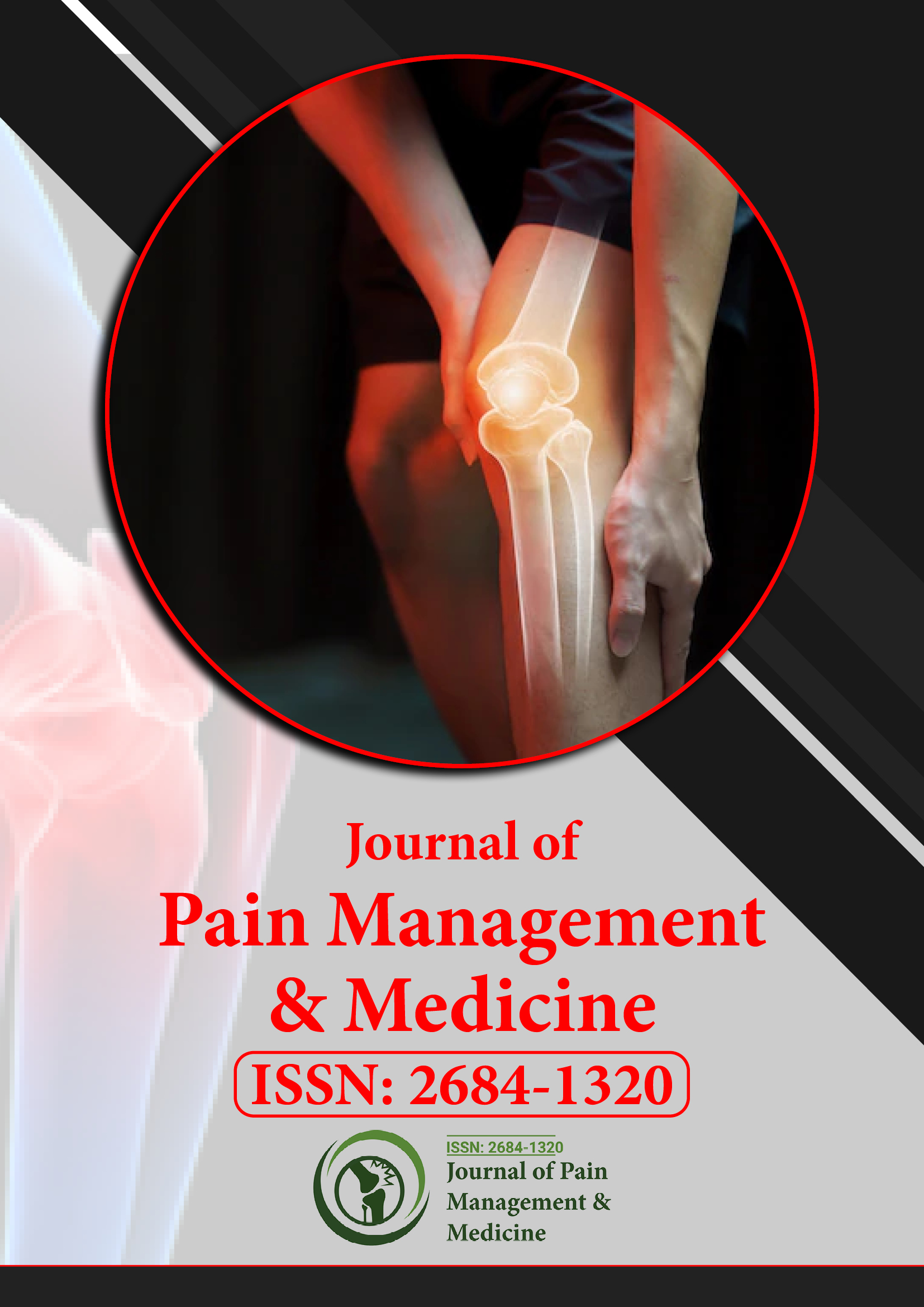Indexed In
- RefSeek
- Hamdard University
- EBSCO A-Z
- Publons
- Euro Pub
- Google Scholar
- Quality Open Access Market
Useful Links
Share This Page
Journal Flyer

Open Access Journals
- Agri and Aquaculture
- Biochemistry
- Bioinformatics & Systems Biology
- Business & Management
- Chemistry
- Clinical Sciences
- Engineering
- Food & Nutrition
- General Science
- Genetics & Molecular Biology
- Immunology & Microbiology
- Medical Sciences
- Neuroscience & Psychology
- Nursing & Health Care
- Pharmaceutical Sciences
Perspective - (2025) Volume 11, Issue 3
Orofacial Pain in Clinical Practice and Pain Management
Jeffrey Rogers*Received: 30-Apr-2025, Manuscript No. JPMME-25-29863; Editor assigned: 02-May-2025, Pre QC No. JPMME-25-29863 (PQ); Reviewed: 16-May-2025, QC No. JPMME-25-29863; Revised: 23-May-2025, Manuscript No. JPMME-25-29863 (R); Published: 30-May-2025, DOI: 10.35248/2684-1320.25.11.331
Description
Orofacial pain refers to pain arising from the face, mouth, jaws, or related structures. It encompasses a wide range of disorders, including dental pain, Temporomandibular Joint Disorders (TMDs), neuropathic pain, and idiopathic facial pain syndromes. Because of the anatomical complexity and shared neural pathways of craniofacial structures, orofacial pain often presents a diagnostic challenge for clinicians. Its impact on chewing, speaking, and daily social interactions also makes it a significant contributor to reduced quality of life.
The most common causes of orofacial pain are dental conditions such as caries, pulpitis, and periodontal disease. These typically produce localized pain and are managed through routine dental interventions. However, chronic and recurrent orofacial pain is more often linked to non-dental conditions, such as temporomandibular disorders. TMDs include pain originating from the temporomandibular joint, associated muscles, and surrounding structures. Patients may present with jaw pain, restricted movement, or clicking sounds during opening and closing.
Neuropathic forms of orofacial pain, such as trigeminal neuralgia, glossopharyngeal neuralgia, and postherpetic neuralgia, are characterized by sharp, stabbing, or burning sensations. These conditions result from injury, compression, or irritation of cranial nerves. Trigeminal neuralgia, in particular, is notorious for its severe, shock-like pain that may be triggered by everyday activities such as speaking or brushing teeth. Other chronic orofacial pain conditions include persistent idiopathic facial pain, burning mouth syndrome, and atypical odontalgia, each with unique clinical features but often overlapping symptom patterns.
The pathophysiology of orofacial pain is multifactorial. Mechanical, inflammatory, neuropathic, and psychosocial factors can all contribute to its development and persistence. Nerve sensitization, both at the peripheral and central levels, plays a critical role in amplifying pain signals. Psychological stress, anxiety, and sleep disturbances frequently exacerbate symptoms, leading to a cycle of chronic pain and impaired daily functioning.
Accurate diagnosis of orofacial pain requires a comprehensive clinical assessment. A detailed history, including onset, location, intensity, and triggers, is essential. Physical examination should evaluate cranial nerves, temporomandibular joint function, and dental health. Imaging techniques such as MRI or CT scans may be indicated in cases of suspected structural pathology. Electrophysiological studies and diagnostic nerve blocks can also aid in distinguishing neuropathic from musculoskeletal causes.
Management strategies for orofacial pain are highly individualized, depending on the underlying etiology. Dental conditions are treated with restorative or endodontic procedures, while TMDs often respond to conservative therapies such as jaw exercises, bite splints, and physiotherapy. Pharmacological management includes Nonsteroidal Anti-Inflammatory Drugs (NSAIDs) for musculoskeletal pain and neuropathic pain medications such as carbamazepine, gabapentin, or tricyclic antidepressants for neuralgias. In refractory trigeminal neuralgia, surgical options such as microvascular decompression or percutaneous rhizotomy may be considered.
Psychological interventions play an important role in managing chronic orofacial pain. Cognitive-Behavioral Therapy (CBT), stress reduction techniques, and mindfulness-based interventions help patients develop coping mechanisms and reduce the psychological burden of pain. In addition, multidisciplinary pain clinics that combine dental, neurological, and psychological expertise are particularly effective in addressing the complex needs of these patients.
Emerging approaches in orofacial pain management include the use of botulinum toxin injections for TMD-related muscle pain and neuropathic syndromes, as well as novel neuromodulation techniques such as Transcutaneous Electrical Nerve Stimulation (TENS) and peripheral nerve stimulation. Advances in neuroimaging and molecular research are also improving understanding of pain mechanisms, potentially leading to more targeted therapies in the future.
In conclusion, orofacial pain represents a diverse group of conditions with significant implications for patient well-being. Its management requires careful evaluation to identify underlying causes and a multidisciplinary approach that integrates dental, medical, and psychological care. While traditional treatments remain effective for many patients, emerging therapies and personalized care strategies hold promise for improved outcomes. As research continues to unravel the complexities of craniofacial pain mechanisms, clinicians are better positioned to deliver comprehensive and patient-centered care.
Citation: Rogers J (2025). Orofacial Pain in Clinical Practice and Pain Management. J Pain Manage Med. 11:331.
Copyright: © 2025 Rogers J. This is an open-access article distributed under the terms of the Creative Commons Attribution License, which permits unrestricted use, distribution, and reproduction in any medium, provided the original author and source are credited.

